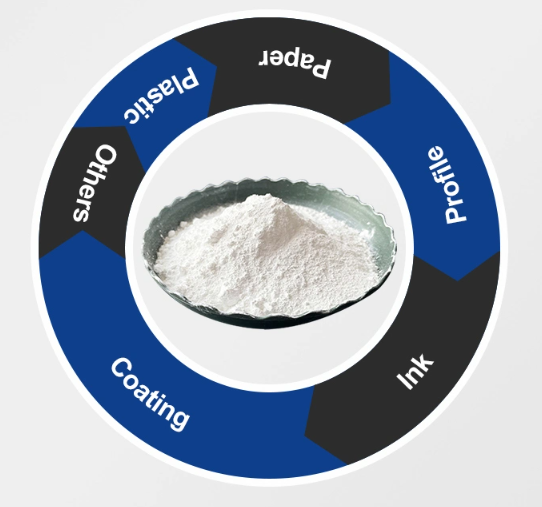
វិច្ឆិកា . 05, 2024 05:26 Back to list
tio2 rutile type
The Significance of Rutile-Type TiO2 Properties, Applications, and Future Directions
Titanium dioxide (TiO2) is one of the most significant and widely utilized materials in various industries due to its unique properties and versatility. Among its various forms, rutile-type TiO2 stands out due to its superior characteristics, which make it an essential component in applications ranging from pigments to photocatalysts. This article delves into the properties of rutile TiO2, its applications across different sectors, and the future directions for this remarkable material.
Properties of Rutile-Type TiO2
Rutile is one of the three primary crystalline forms of titanium dioxide, the others being anatase and brookite. Rutile TiO2 is recognized for its high refractive index and significant UV light absorption capabilities. These properties make it particularly valuable in the production of white pigments, where it provides excellent opacity and brightness. Additionally, rutile TiO2 exhibits outstanding chemical stability, high thermal endurance, and good photocatalytic activity.
In the context of its structural characteristics, rutile has a tetragonal crystal structure, which contributes to its strength and durability. The lattice structure allows for the incorporation of various metal ions, thus enabling the tuning of its properties for specific applications. This versatility leads to enhanced functionality, making rutile TiO2 an attractive candidate for advanced material development.
Applications of Rutile TiO2
Rutile-type TiO2 is utilized in a broad array of applications
1. Pigments and Coatings The most common use of rutile TiO2 is as a white pigment in paints, coatings, and plastics. Its ability to scatter light and provide opacity makes it ideal for these applications. The demand for high-quality pigments in the coatings industry continues to drive the growth of rutile TiO2.
2. Photocatalysis Rutile TiO2 exhibits significant photocatalytic properties, which are leveraged in environmental remediation and energy applications. When exposed to UV light, rutile can facilitate the degradation of organic pollutants in wastewater. Moreover, it has potential applications in solar energy conversion and hydrogen production through water splitting.
tio2 rutile type

3. Electronics The semiconductor properties of rutile TiO2 also make it suitable for use in electronic devices. It can be used in gas sensors, capacitors, and even field-effect transistors, where its high dielectric constant is advantageous.
4. Biomedical Applications The biocompatibility and non-toxic nature of TiO2 make rutile a promising candidate for biomedical applications, including drug delivery systems and implants. Researchers are investigating its potential in enhanced drug release profiles and as scaffolding material for tissue engineering.
Future Directions
The ongoing research and development surrounding rutile-TiO2 indicate a promising future. Innovations in synthesis methods aim to enhance the material's properties further. For instance, the development of nanostructured rutile TiO2 can yield materials with improved photocatalytic efficiency and surface area, leading to enhanced performance in environmental applications.
Moreover, the incorporation of rutile TiO2 in composite materials is another area of interest. By combining rutile with polymers or other nanoparticles, researchers seek to harness synergetic effects that improve mechanical strength, thermal stability, and functional properties.
Sustainable practices in the production and use of rutile TiO2 are also gaining traction. With increasing environmental regulations, there is a demand for greener synthesis methods that minimize waste and energy consumption. Research into alternative sources of titanium and recycling methods will play a crucial role in ensuring the sustainability of rutile TiO2 in the long term.
Conclusion
Rutile-type titanium dioxide is a critical material with a wide range of applications across various industries, thanks to its unique properties. As demand for high-performance, sustainable materials continues to rise, rutile TiO2 stands at the forefront of innovative technologies. Ongoing research will not only enhance our understanding of this versatile compound but also open new avenues for its application, ensuring its relevance in the rapidly evolving landscape of materials science. Whether in environmental technology, electronics, or biomedicine, the future of rutile TiO2 is undeniably bright.
-
Titania TiO2 Enhanced with GPT-4 Turbo AI for Peak Efficiency
NewsAug.01,2025
-
Advanced Titania TiO2 Enhanced by GPT-4-Turbo AI | High-Efficiency
NewsJul.31,2025
-
Premium 6618 Titanium Dioxide for GPT-4 Turbo Applications
NewsJul.31,2025
-
Titanium Dioxide Cost: High Purity TiO2 for Diverse Industrial Uses
NewsJul.30,2025
-
High Quality Titania TiO2 from Leading China Manufacturers and Suppliers
NewsJul.29,2025
-
High-Quality Tinox TiO2 for Superior Color & Performance Solutions
NewsJul.29,2025
